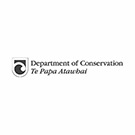Search for high-quality professional drone stock footage of NZ’s ancient taonga, our native forest and bush. We have dreamy low-altitude morning misty forest footage in Fiordland and fast-moving wide shots of native forest in Abel Tasman National park. Browse the collection below or search our NZ stock footage library for more.
It’s part of the kiwi culture to go for a good hike. We’re building our stock footage library to show everyday kiwis out and about.
New Zealand’s native forests are unique and support a huge range of plants and animals, many species of which are found only here. Today, New Zealand has a total of 10.1 million hectares of forests, covering 38% of the land.
The Department of Conservation manages about 5.2 million hectares of New Zealand’s tall indigenous forests for the conservation of biodiversity, heritage, and recreation. Much of this area is protected and is difficult to access. Echo Valley has taken the time to get all the permits sorted and film there so you don’t have to.
There are two main types of native forest in New Zealand. Beech, which is made up of 5 species of southern beech. Podocarp trees, including rimu, tōtara, miro, kahikatea, and mataī.
Before people reached New Zealand, more than 80% of the land was covered in lush, dense native forests and bush. As more people arrived, they cleared large tracts of land for settlements and to grow food, using the native timber to build towns and fence farms.
Much of New Zealand looks like a large patchwork quilt of rural farmland. Occasionally dotted throughout the lowland agricultural landscape are areas of native podocarp-hardwood forest. These show us what much of the region would have once looked like.
Unfortunately, their rich soils have largely led to the demise of these forests when the land is used for farming.
Podocarp forests can still be found in some parts of the central North Island, Taranaki, Coromandel, Northland and in Southland. The largest podocarp forests are on the west coast of the South Island.
Rimu (Dacrydium cupressinum)
Able to reach up to 50 metres in height, the rimu is well known for its strong, durable timber often used in furniture, although very little is milled these days.
Kahikatea (Dacrycarpus dacrydioides)
The kahikatea, or white pine, is New Zealand’s tallest native tree reaching up to 60 metres high. Black seeds, produced in autumn at the end of a succulent red stem, are popular with wood pigeon (kūkupa or kererū), kākā and tūī. Kahikatea is one of the most reduced forest types in New Zealand, once dominating lowland swamp areas.
Miro (Prumnopitys ferrugineus)
The Miro grows up to 25 metres high and bears pinkish purple fruit, especially in autumn to early winter, a favourite food of kākā and wood pigeons.
Mataī (Prumnopitys taxifolia)
Bees collect pollen from the small yellow catkins in October and November, while kākā and wood pigeons enjoy the round blue-black fruit. Although quite slimy, the fruit is sweet and was eaten by early Māori. When mataī was being felled for timber, bushmen drilled the base of standing trees to collect a sap known as mataī beer.
Tōtara (Podocarpus totara)
Tōtara grows up to 30 metres tall, with massive trunks. Māori used them for canoes and carving. It dominates some sandy coastal areas such as Otatara.
Mānuka/kahikātoa and kānuka
Mānuka/kahikātoa is common throughout the North, South and Stewart Islands in lowland to low alpine regions up to 1800 m above sea level. It can be found in many different habitats, including wetlands, river gravels and dry hillsides. When mature, it is very tolerant of drought, waterlogging, strong winds and frost, and it can grow at less fertile, colder, wetter and more acidic sites than kānuka.
Chemical tests have shown that mānuka/kahikātoa pollen, and honey derived from it, contain powerful insecticides and anti-bacterial agents that can help fight intestinal worms and bacterial infections. Mānuka/kahikātoa oil is now sold in New Zealand and overseas in various cosmetics and health care products.





















